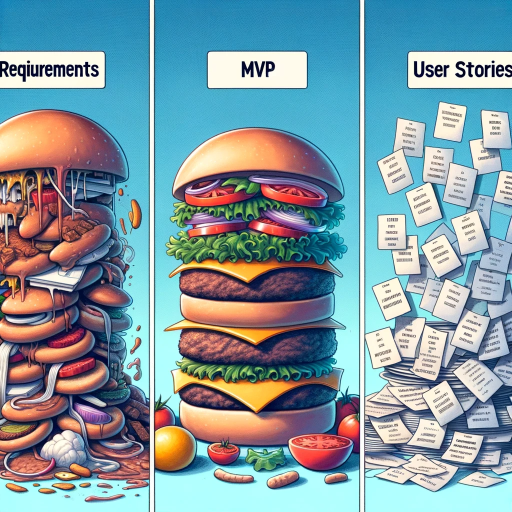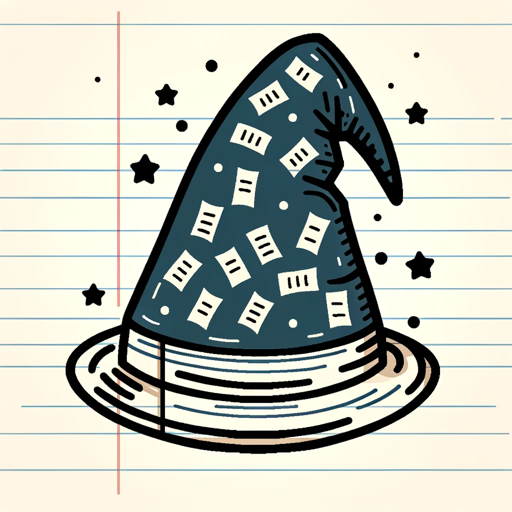User Story Map-User Journey Generated User Stories-user stories from journey maps
AI-driven user stories for Agile teams
Related Tools
Load More
Customer Journey Map Assistant
Create post-sales Customer Journey Maps for various industries with expertise from NimbleCSM

ProductMuse - User Stories
Converts a few words into effective user stories with clear problem statements, detailed acceptance criteria, and test case suggestions. Backed up by an experienced Product Manager and Scrum and Agile methodologies. Ready to copy-paste in JIRA!

Stories for Jira Backlog
Create a Story description ready to be implemented by the developers

Bob The BA - User Story
A Business Analyst That Creates User Stories

Jira Ticket Helper
Help to define a user story ticket based on the information provided

User Story Crafter (USC)
A user story crafting GPT that aligns with your tech stack.
20.0 / 5 (200 votes)
Introduction to User Story Map-User Journey Generated User Stories
User Story Map-User Journey Generated User Stories is a framework designed to help Agile teams transform user journeys into well-structured, actionable user stories. The core purpose is to bridge the gap between user experience (UX) design and Agile development by translating user needs and workflows into clearly defined features and functionalities. This approach emphasizes the importance of understanding the end user's experience in order to create stories that are not only technically sound but also aligned with the business goals and customer expectations. For example, when developing an e-commerce platform, a user journey could involve a customer searching for products, adding them to a cart, and completing a purchase. By mapping this journey, the platform's development team can break it down into specific user stories, such as 'As a customer, I want to search for products by category so that I can easily find what I'm looking for.' This ensures that every feature is aligned with user behavior and business value.

Main Functions of User Story Map-User Journey Generated User Stories
Transforming User Journeys into Functional User Stories
Example
A travel booking app might have a user journey where a user searches for flights, selects one, and proceeds to payment. This journey would be broken down into several user stories: 'As a traveler, I want to search for flights based on my travel dates and destination so that I can choose the most convenient option,' and 'As a traveler, I want to receive flight options sorted by price so that I can make a cost-effective decision.'
Scenario
In real-world applications, this function is vital for organizations looking to ensure that all features directly meet user expectations, allowing them to build only what is necessary and relevant to the end user.
Ensuring Alignment with Business Value
Example
For a subscription service platform, the user story might be 'As a subscriber, I want to receive recommendations based on my previous interactions so that I can easily discover new content I enjoy.' The business value here is retaining users by improving their experience through personalized content recommendations.
Scenario
This function is crucial when a company wants to prioritize features that directly impact user retention, satisfaction, or revenue growth.
Breaking Down Complex Requirements into Manageable Stories
Example
In a complex application like a CRM system, where a user might interact with multiple modules (e.g., sales, customer service, analytics), each part of the journey can be converted into actionable user stories like 'As a sales agent, I want to track all customer interactions in one place so that I can follow up efficiently.'
Scenario
This helps product teams manage scope, avoid feature bloat, and ensure that every development effort is tied to a clear and well-defined user need.
Ideal Users of User Story Map-User Journey Generated User Stories
Agile Product Owners
Agile Product Owners are responsible for defining and managing the product backlog. They benefit from using User Story Map-User Journey Generated User Stories as it enables them to focus on the user's needs and create a clear roadmap of user stories that prioritize business value. This framework helps them translate high-level business goals into actionable items for the development team.
UX Designers and Researchers
UX designers and researchers use this service to ensure that the user stories are rooted in real user behaviors and needs. By mapping out the journey, they can provide the necessary context to product owners and developers, ensuring that the final product aligns with user expectations and enhances the overall user experience.

Steps for Using User Story Map-User Journey Generated User Stories
Step 1
Visit aichatonline.org for a free trial without login; no need for ChatGPT Plus.
Step 2
Familiarize yourself with the user interface, which offers tools for creating user stories based on user journey mapping.
Step 3
Define your project goals, key personas, and user flow before starting to build the user story map. Use the tool to identify critical user touchpoints.
Step 4
Generate user stories by inputting requirements, using the tool to articulate steps within the journey that translate into specific tasks.
Step 5
Review and refine the user stories, ensuring that each story aligns with your project’s acceptance criteria and supports your business objectives.
Try other advanced and practical GPTs
Backloger.ai - Smashing Business Elevator Pitches
AI-powered pitches that persuade.

AI Writer & SEO Content Creator
AI-Powered Content for SEO Success

Backloger.ai - Product MVP Accelerator
AI-powered tool for rapid MVP creation

Project Proposal Generator
AI-Powered Project Proposal Generator

Black Friday 2024 Deal Finder GPT – Best Deals
AI-Powered Tool for Black Friday Deals

GPT Finder, by MVPie
AI-powered discovery for tailored GPTs

Note Wizard
AI-powered notes and summaries at your fingertips.

Backloger.ai - E2E TESTS out of any requirements
AI-powered E2E testing from requirements

Backloger.ai - Product - User Persona
AI-Powered Persona Development Tool

AI Tools GPT
Powering creativity and automation with AI

AI Homework Helper
AI-Powered Homework Help Made Easy

Backloger.ai -Support Log Analyzer and Summary
AI-driven insights for support logs

- Project Management
- Software Development
- Product Design
- UX Research
- Agile Workflow
Q&A for User Story Map-User Journey Generated User Stories
What is User Story Map-User Journey Generated User Stories?
It’s an AI-driven tool that helps users generate detailed user stories from user journey maps. It focuses on translating customer interactions and business requirements into actionable tasks for development teams.
How does the tool help with project management?
By structuring user stories based on user journeys, the tool ensures that all aspects of the customer experience are covered, enabling more effective project planning and task prioritization.
What kind of projects can benefit from this tool?
This tool is ideal for software development, product management, UX/UI design projects, and any other initiatives where user-centered design and Agile methodologies are key.
How can I make the most of this tool?
To optimize your experience, come prepared with a clear understanding of your users, their journeys, and business requirements. The tool will guide you in structuring these into functional user stories.
Is it possible to customize the user stories?
Yes, once the tool generates user stories, you can edit and tailor them to suit your project’s specific needs, ensuring alignment with business goals and user expectations.